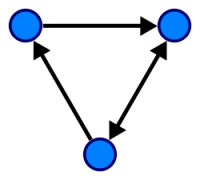Graphs in Python
13th July 2013
 Sooner or later, everyone has to deal with graphs. Some people have to do programming with graphs, and a subset of those – do that in Python.
Sooner or later, everyone has to deal with graphs. Some people have to do programming with graphs, and a subset of those – do that in Python.
NetworkX is a pure Python implementation, where anything can be nodes. Both nodes and edges have attributes. NetworkX supports directed graphs and multigraphs (where there are multiple edges between nodes). It might be slower than other implementations, but you may even not notice that – especially when working with smaller graphs, or not applying computationally-intensive algorithms to your graphs.
graph-tool uses the Boost graph library (C++), so it should be really fast. It could be the only multi-threaded graph library for Python. It supports pickling the graphs, allows interactive graph drawing, and has well-illustrated documentation. If performance and efficiency are of utmost importance – could be the best choice.
igraph is also really fast – just like graph-tool when using 1 CPU; graph-tool only wins conclusively when it is run on multiple CPUs/cores. igraph has an R package bindings to C.
Pure python is also an option for really smaller cases.
Finally, there’s a discussion around Python Graph API to simplify the inter-changeability and inter-operability of various existing Python graph modules. It also has a list of some less-known Python graph libraries, so check it out.
